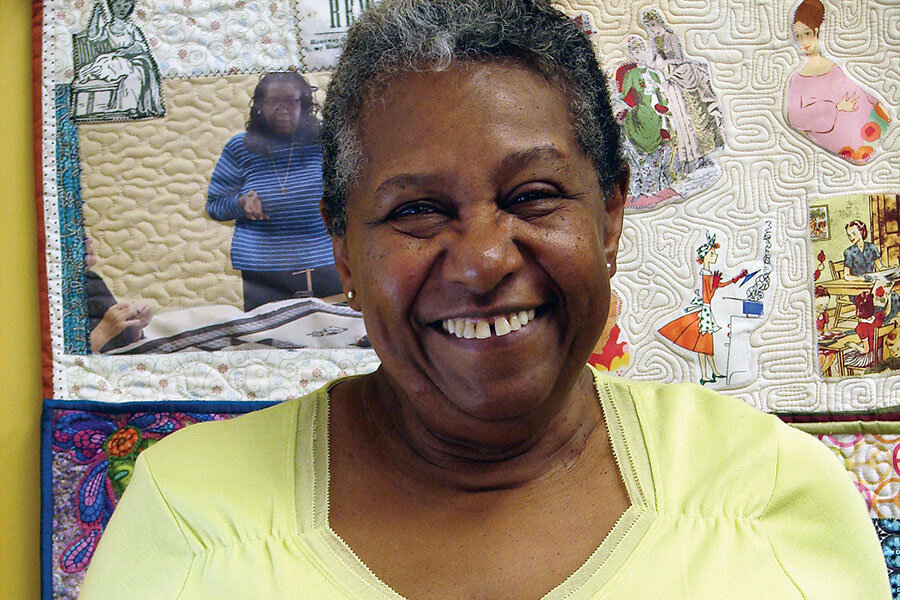She creates quilts with a message
Loading...
This essay is part of an occasional series provided by our partner organization Encore.org, which is building a movement to tap the skills and experience of those in midlife and beyond to improve communities and the world. Read more stories and share yours at Encore.org/story.
From childhood, I was always interested in art and started quilting at age 6. I was allowed to watch television only if I was doing something constructive, and that “something” was quilting.
You could say I was interested in social activism even as a kid. I wanted my quilts to be beautiful, but also wanted them to say something about the world.
Like everybody else, I found my art often got pushed aside as I built my career in education and social work. I ran a federal jobs program in several US cities, and taught school from the elementary grades to college.
It was in the 1980s that I created what you could call my first “political” quilt. There was a decision to build a landfill in Kansas City, Kan., where I live. The chosen site was near the Missouri River and the old town of Quindaro, a stop on the Underground Railroad that had provided refuge for slaves seeking freedom. Contracts had been signed, people had been paid, but a small group of us said, “This is not going to happen. We will not let it.”
The first thing I did was make a quilt about the history of Quindaro. That quilt went around the state, testifying against the landfill. When a law was passed saying the state could not put a landfill on a navigable stream, that law was signed in front of my quilt.
After that experience, I wanted to do more art, taking an issue and putting it into fabric, exhibiting it and creating conversations. People need to tell their stories for healing as well as for information, and to document history. Quilting is a way to do that in a noncontroversial way because it’s a soft medium. There’s something about the stories being on fabric that makes them more inviting.
I never thought this would turn into my lifework after retirement. I apply for grants and answer open calls for artists. I look for opportunities to work with communities and organizations that are interested in real issues.
One of my favorite projects was the Local Hero Quilt Project in the Kansas City schools. I went into an elementary school and asked children who their heroes were – real people, not people who fly around in capes. I wanted them to name someone from their neighborhood or city who had made a difference. They had no idea. None of the subjects they study relate to where they live or to local history. They never really learn about their community.
I introduced them to 50 people, living or historical figures, from Kansas City, including the current chief of the Wyandot Indians. The county where the children live, Wyandotte County, got its name from the tribe. They were shocked that there were Indians living near them!
They researched the names, picked one, and drew a picture of the person or his or her deeds. I put their pictures in the computer and printed them on fabric, and they colored them. The result: eight quilts in one semester. I loved letting them know they are in charge of their own education and, if there is anything they want to know, they have the power to find out.
In a broader sense, what I do is about educating people as to what’s going on and showing them that they can do something about it. Lots of folks march in the streets. I’m too old for that. But at times, I need to do something with my anger. If I sew a fabric together, that can be my statement.







